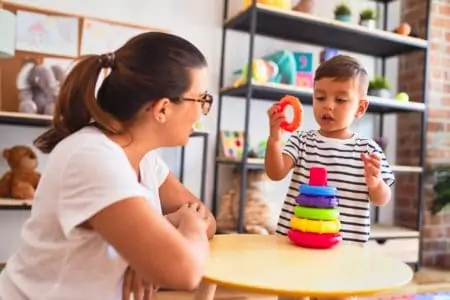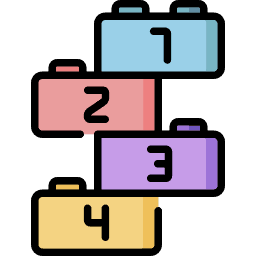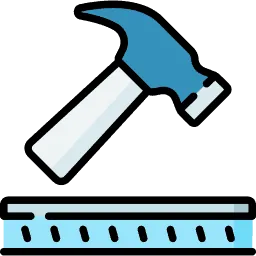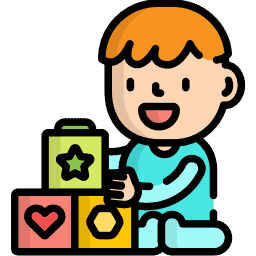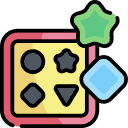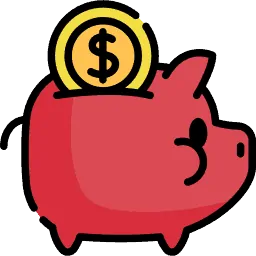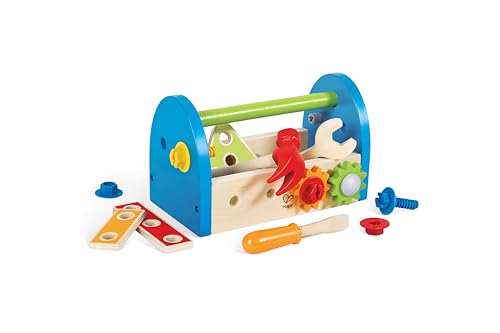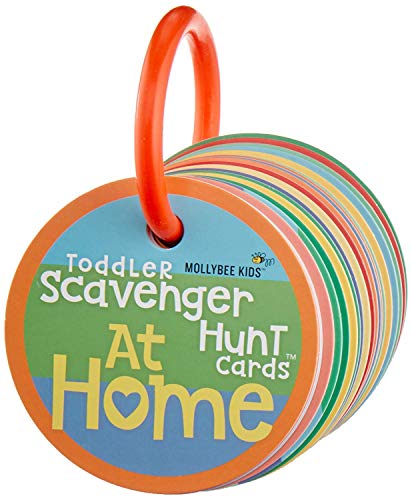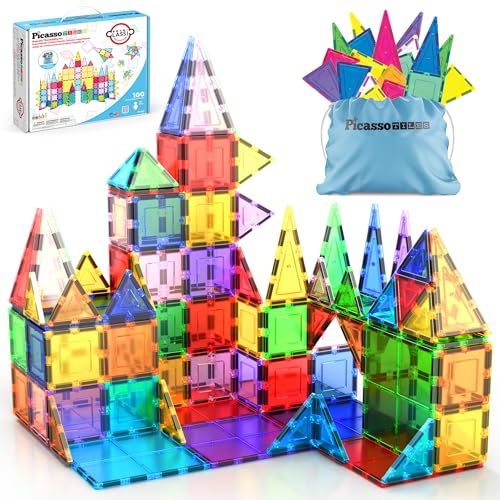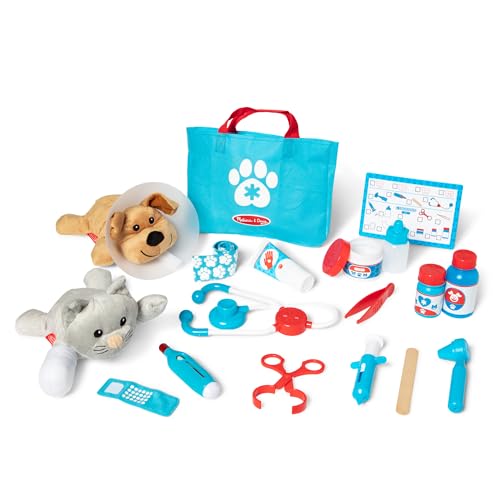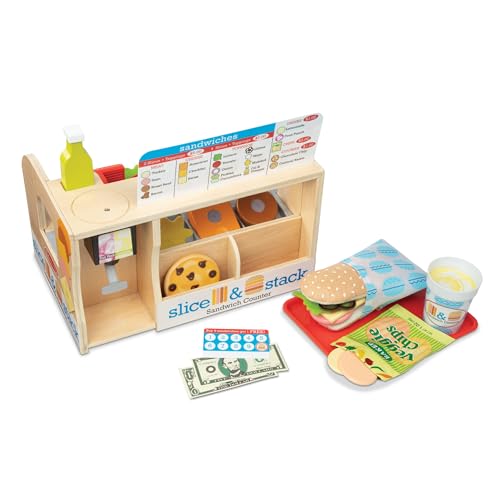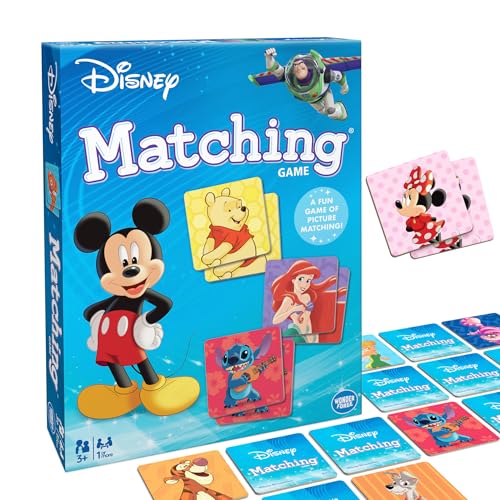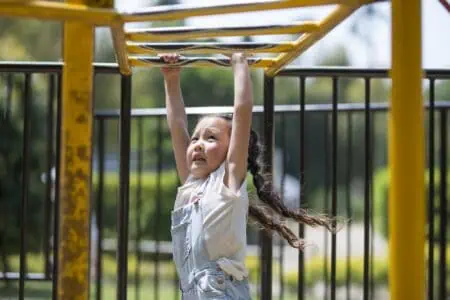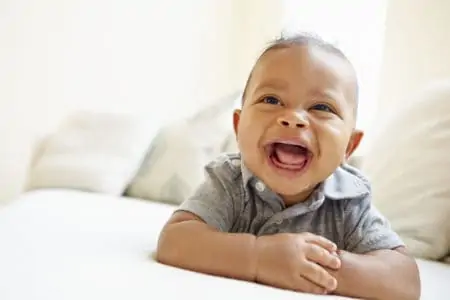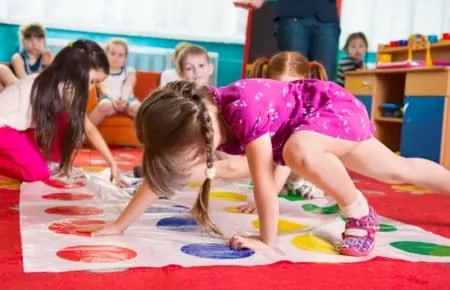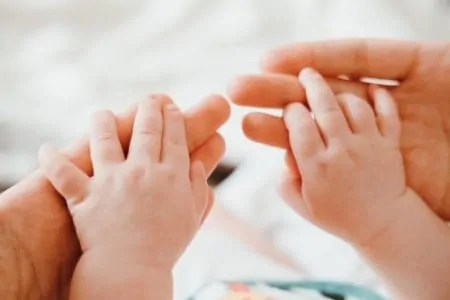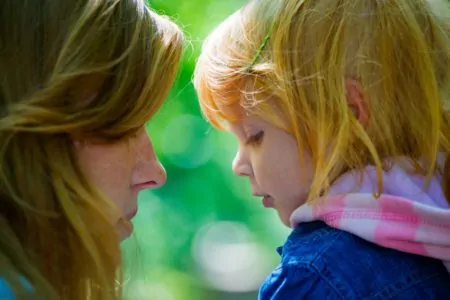Most toddlers are chatterboxes in training. While every child develops at their own pace, the right playthings can spark a language explosion and bridge the gap between babbling and full sentences.
But how do you find toys that actually encourage speech rather than just making noise?
We tapped into the expertise of the Mom Loves Best team, consulted speech language pathologists, and gathered feedback from real parents. Here is our curated guide to the best toys to help toddlers talk.
- 17-piece music toy set
- Includes free storage backpack
- Bright and colorful design
- Comprehensive accessory set
- Includes can packs & basic tools
- Comes in many different themes
- Includes 3 floors & 12 rooms
- Folds up for easy storage
- For role & pretend play
- Foldable, portable and adorable
- 14-piece wooden toy set
- Kid-friendly materials
- Open concept design
- Includes 22-piece accessory set
- For nesting & stacking
- Has animal characters on the bottom
- 100-piece felt board set
- Includes a storage bag
- 6 stack-up-any-way discs
- Coated, BPA-free plastic
How to Choose Toys That Encourage Speech
You do not need expensive gadgets to get your child talking. Keep these factors in mind when shopping for speech-promoting toys.
Product Reviews
We chose these top-rated toys because they encourage interaction, turn-taking, and active storytelling rather than passive listening.
Stoie's International Wooden Music Set for Toddlers
Best Musical Toy
Recommended age: 2 years+
Musical instruments are fantastic for teaching the rhythm of language. Even if your child isn’t forming full words yet, banging a drum while saying “bam bam” or ringing a triangle to “ting ting” builds the foundation for speech sounds.
You can use the xylophone to mimic the ups and downs of conversational tones. Try hitting high notes while asking a question and low notes for the answer. We also love using instruments for “stop and go” games, which teach listening skills and impulse control, both vital for conversation.
Playmobil 1.2.3 Family Home
Best Reenactment
Recommended age: 18 months+
This starter dollhouse lets children reenact their daily lives, which helps solidify vocabulary they hear every day. You can narrate routines like “The baby goes to sleep” or “Ideally, we eat dinner now.”
The chunky pieces are safe for toddlers and easy to manipulate. Try “dropping in” on their play and asking open-ended questions like, “Who is in the bathroom?” or “Where is the dog going?” This encourages them to describe actions and locations.
Play-Doh Fun Tub Playset
Best Open-Ended
Recommended age: 3 years+
Play-Doh is the ultimate sensory tool for language. As you knead and shape the dough, you can introduce descriptive words like “squish,” “roll,” “cut,” “soft,” and “long.”
Create simple creatures and act out little scenes. You can practice social scripts by having two dough monsters say “hello” and “goodbye” to each other. It creates a low-pressure environment where your child can practice conversation skills while keeping their hands busy.
KidKraft Everyday Heroes Wooden Playset
Best for Emergency Vehicles
Recommended age: 3 years+
If your child loves sirens and rescue trucks, this playset is a goldmine for vocabulary. It expands play beyond just driving cars around by introducing a dispatch desk, fire pole, and living quarters.
You can act out emergency calls to practice communication. Pretend to be the dispatcher and give your child a mission: ” The cat is stuck in the tree! Go save him!” This requires them to listen, process instructions, and verbally respond to the scenario.
Battat, Big Red Barn, Animal Farm Playset
Best for Prepositions
Recommended age: 18 months+
Farm toys are classic for a reason. They offer an easy way to teach animal sounds, which are often some of the first “words” toddlers master.
This set is specifically great for teaching spatial concepts and prepositions. Ask your child to put the pig “in” the barn, take the cow “out,” or put the sheep “behind” the door. You can also make mistakes on purpose, putting the cow on the roof, to prompt your toddler to correct you.
Hape Fix-It Tool Box and Accessory Set
Best for Imitation
Recommended age: 3 years+
Toddlers love to mimic their parents. This wooden toolset lets them “help” you with repairs around the house, opening the door for cooperative dialogue.
Use verbal routines to build anticipation. Say “Ready… set…” and wait for your child to shout “Bang!” before hitting a nail. Using tools also encourages questions like “What is broken?” or “Which tool do we need?” which helps develop problem-solving language.
Step2 Crazy Maze Ball Pit Playhouse
Best for Active Words
Recommended age: 18 months+
This is not just a playhouse; it is an activity center that gets the whole body moving. The balls, maze, and roof allow for active verbs like “throw,” “catch,” “roll,” “drop,” and “climb.”
Narrate their actions as they play: “You are going inside the house” or “The ball is rolling down.” The sheer size of the toy encourages social play with siblings or friends, naturally creating situations where they must negotiate turns and share space.
Rainbow Nesting and Stacking Cups
Best Back-to-Basics
Recommended age: 6 months+
Simple toys often produce the best results. These cups are safe for teething babies and remain engaging well into toddlerhood. They are perfect for learning size concepts like “big,” “bigger,” and “biggest.”
Play hide-and-seek with small toys under the cups. Ask, “Where is the car?” and lift a cup to say, “Not here!” This builds object permanence and introduces negative sentences (like “no” or “not”) in a fun, low-stress context.
Faber-Castell My First Fun Felt Shapes
Best for Travel
Recommended age: 3 years+
Felt shapes are excellent for storytelling because they are easy to move and change. Your child can create a scene, and you can ask them to describe what is happening.
If your toddler is still non-verbal, you can build the scene while narrating your choices. “I am putting the blue hat on the cat.” It is also a quiet, mess-free option for travel, letting you practice language skills in the car or at a restaurant without electronics.
Fat Brain Toys SpinAgain Kids Stacking Toy
Best for Speech Stimulation
Recommended age: 12 months+
This visually engaging stacker is mesmerizing for little ones. The spinning motion provides a great reward for communicating.
Hold a disc and wait for your child to make a sound, point, or say “please” before you hand it over. As the discs spiral down the pole, use fun sound effects like “Whoooooa” or “Wheeee.” These exclamatory sounds are easy for toddlers to imitate and fun to repeat.
Step2 Rain Showers Splash Pond Water Table
Best Sensory
Recommended age: 18 months+
Water play is highly motivating. This two-tier table creates a “rain” effect that fascinates toddlers. It introduces liquid-related vocabulary like “splash,” “pour,” “wet,” “dry,” “float,” and “sink.”
Use the accessories to play anticipatory games. Fill a bucket, count “One, two, three…” and wait for your child to shout “Go!” before dumping the water. This builds attention span and teaches the power of using words to cause an action.
Learning Resources Serve It Up! Play Restaurant
Best for Social Preparation
Recommended age: 3 years+
Restaurant play is all about social interaction. This set encourages your child to take orders, which requires listening and memory skills.
Role-play gives you the chance to model polite phrases like “May I have…?” and “Thank you.” You can also discuss food preferences (“Yum” vs. “Yuck”) and ask questions about the menu. Combine it with other play food to expand the vocabulary feast.
Mollybee Kids Toddler Scavenger Hunt
Best Low-Pressure
Recommended age: 2 years+
This portable card set turns your house into a language lab. It prompts you to find everyday items, turning a boring afternoon into an exciting mission.
It moves the focus from “sit and talk” to “move and find,” which takes the pressure off the child. As they search, ask questions like “Is it under the bed?” or “Is it big or small?” When they find the item, celebrate with descriptive praise to reinforce the word connection.
Little Kids Fubbles No-Spill Bubble Tumbler
Best for Oral Motor Development
Recommended age: 18 months+
Bubbles are magic for toddlers. Beyond the fun, blowing bubbles exercises the oral muscles (lips, jaw, and tongue) needed for speech articulation.
We prefer this manual blower over automatic bubble machines because the physical act of blowing is the exercise. You can also practice bilabial sounds like “P” and “B” by saying “Pop,” “Bubble,” and “Bye-bye bubbles.”
PicassoTiles 100 Piece Set Magnet Building Tiles
Best for Building Words
Recommended age: 2 years+
Magnetic tiles are brilliant for introducing concepts of color, shape, and structure. You can build tall towers and knock them down, using words like “crash,” “fall,” and “boom.”
Because they stick to fridges and garage doors, you can take the language learning vertical. Ask your child to hand you the “red square” or the “blue triangle,” turning construction time into a vocabulary lesson about adjectives and nouns.
Fisher-Price Laugh & Learn Piggy Bank
Best Electronic
Recommended age: 6 months+
While we generally suggest avoiding batteries, this piggy bank is a solid exception because it emphasizes cause and effect. The large coins are easy to grasp and feature animals and numbers.
You can focus on counting as you drop coins in: “One, two, three… in!” Pause before dropping the last one to see if your child vocalizes the word “in.” It also works well for requesting games; keep the coins and have your child ask for “more” or “piggy.”
Pet Vet Play Set
Your Bet Vet
Recommended age: 32 months+
A vet kit puts your toddler in charge. This role-reversal boosts confidence, which is key for hesitant talkers. They become the “expert” explaining what is wrong with the dog or cat.
It is perfect for teaching body parts (“Where is the dog’s ear?”) and empathetic language (“Oh no, ouchie,” “Feel better,” “Gentle”). The specialized tools like the stethoscope and thermometer also introduce new, specific nouns to their vocabulary.
Kids Gardening Tools and Story Book
Best Outdoor
Recommended age: 18 months+
Nature is a great conversation starter. This gardening set gets you outside digging in the dirt, which is a rich sensory experience.
Talk about the texture of the soil (“dirty,” “muddy,” “wet”) and the process of growing (“dig,” “plant,” “water,” “grow”). The included storybook reinforces the same vocabulary you use outside, helping your child connect the pictures in the book to the real-world actions in the yard.
Slice and Stack Sandwich Counter
Best Question and Answer
Recommended age: 2 years+
This sandwich counter is amazing for sequencing, the ability to put events in logical order (“First bread, then cheese, then meat”). This skill is crucial for telling stories later in life.
It naturally prompts specific questions like “Do you want cheese?” or “Lettuce or tomato?” This forces a choice, requiring a specific word rather than a generic “yes” or “no.” It is a tasty way to practice conversational turn-taking.
Wonder Forge Disney Classic Characters Matching Game
Best Multiple Possibilities
Recommended age: 2 years+
You can play a standard memory game with these cards, but they are also great for vocabulary drills. Use the cards to play “I Spy” or hide them around the room for a scavenger hunt.
Ask your child to find specific characters (“Where is Mickey?”) or describe the card they picked up (“I see a blue fish”). The familiar Disney characters are instantly recognizable, which helps children feel confident naming them.
Tips to Encourage Toddler Speech
Toys are just the tools; you are the teacher. Here are effective strategies to help your toddler find their voice.
Ask Open-Ended Questions
Try to avoid questions that result in a simple “yes” or “no.” Instead of asking, “Do you want an apple?”, try asking, “What fruit should we eat for lunch?” This forces your child to access their vocabulary bank and formulate a specific answer.
Understand the Process
Speech involves complex coordination between the brain, nerves, and muscles. It is normal for toddlers to develop speech skills gradually. Focus on small wins and age-appropriate sounds rather than perfect pronunciation (4).
Narrate Your Day
Act as a sportscaster for your life. Narrate what you are doing as you do it: “I am washing the blue cup,” or “We are putting on your red shoes.” This floods your child’s brain with vocabulary in context, helping them map words to actions and objects.
Focus on Non-Verbal Skills
Communication is not just about words. Games that practice non-verbal skills lay the groundwork for speech.
- Imitate sounds: Practice animal noises or vehicle vrooms.
- Sing songs: The rhythm and repetition of nursery rhymes help memory.
- Make faces: Blowing kisses or making funny faces strengthens mouth muscles.
- Practice turns: Rolling a ball back and forth teaches the rhythm of conversation.
Keep It Low Pressure
If a child feels tested, they may clam up. Avoid demanding, “Say cookie!” Instead, create a situation where they want the cookie, hold it near your mouth, say “cookie,” and wait to see if they attempt the sound. If they point or grunt, model the word again and give them the treat.
When to See a Doctor
Roughly 20% of children experience a speech delay (5). While many catch up on their own, early intervention is incredibly effective.
If your child is not meeting standard milestones or if you are concerned about their hearing or understanding, consult your pediatrician. It is always better to get an evaluation for peace of mind than to wait and worry.
